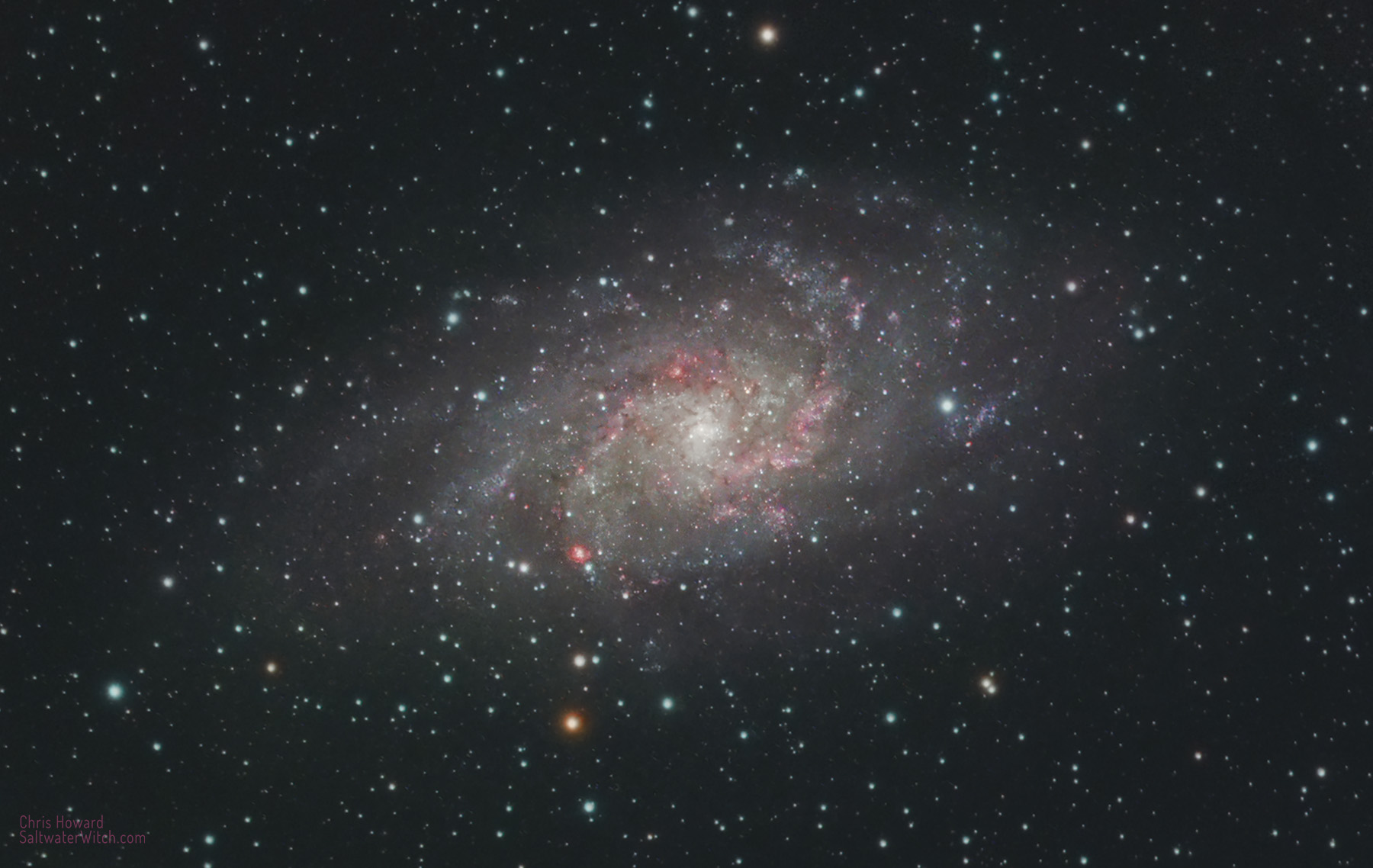Triangulum Galaxy, Picking Favorites
May 9, 2022
M33, the Triangulum Galaxy in Ha+RGBColor with the SpaceCat51 and ZWO ASI071MC cooled color camera + Atik 414EX monochrome camera. I processed some 2018 and 2019 data to see what kind of detail I can get out NGC 604--that's the large pink mass at the middle bottom of the galaxy in this rotation. NGC 604 is a vast HII region, much brighter and 40 times larger than the Orion Nebula in our galaxy. M33 is a little under 3 million lightyears away.
Andromeda (M31) was the first deep sky object I captured with a camera--an old Nikon D40x DSLR. The Orion Nebula (M42) was the second. For many years M31 was my favorite galaxy and it is in many ways the ideal galaxy; it's a massive spiral at the perfect photographic angle from our perspective, here in the middle of our own galaxy. At two and a half million lightyears, it's not far away. And while M101, the Pinwheel Galaxy, is perfect from a galactic structure point of view, being a face-on from our perspective (or top down), Andromeda is cinematically posed for all of us taking pictures from earth. Galaxies are not really my thing. I usually focus on narrowband imaging of nebulae, supernova remnants, and other large structures within the Milky Way--so, thousands of lightyears away, not millions. I almost always shoot with sub-1000mm focal lengths, and galaxy imagers are usually running with 2000mm or more. OTAs of 3000mm and up are common.
Andromeda is certainly one of my favorites, but I think the Triangulum Galaxy (Messier 33, M33, NGC 598) in the constellation Triangulum is my favorite northern hemisphere galaxy. It's kind of chunky with vast HII regions (the pink structures scattered along the spiral arms). It gets a little thin out toward the edges; not the smooth plane of stars you see in the Andromeda galaxy. It's made up of 40 billion stars rather than the trillion or so in Andromeda. M33 is another galactic neighbor and close enough to capture with medium focal lengths.

